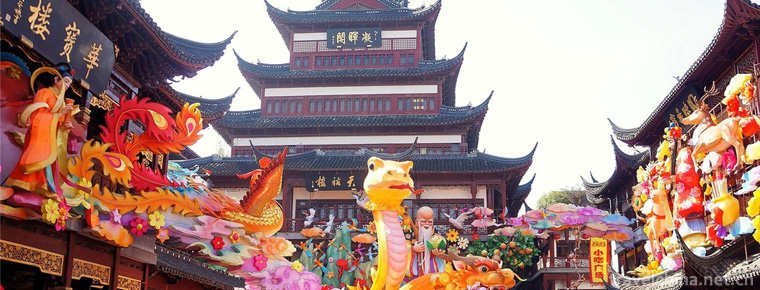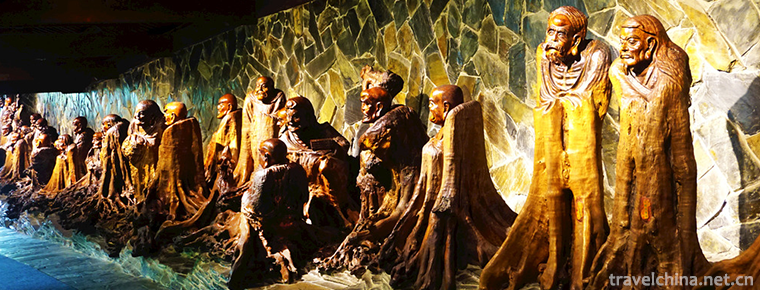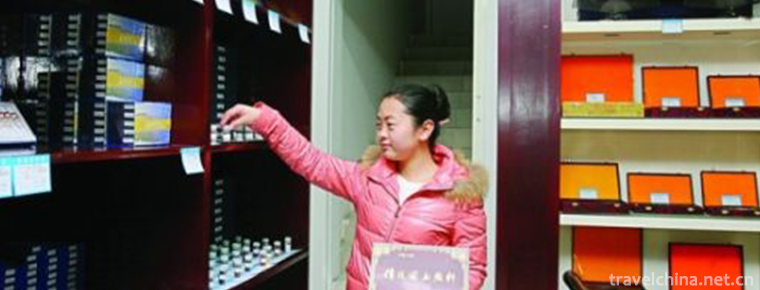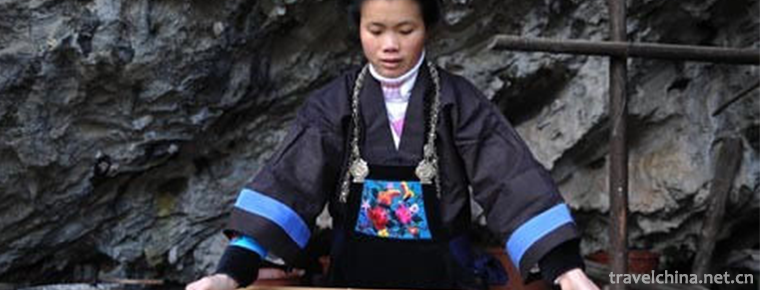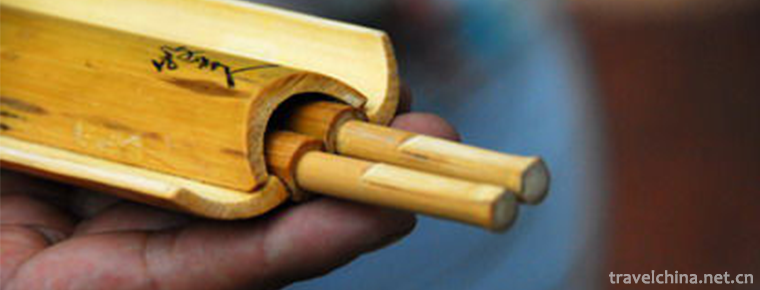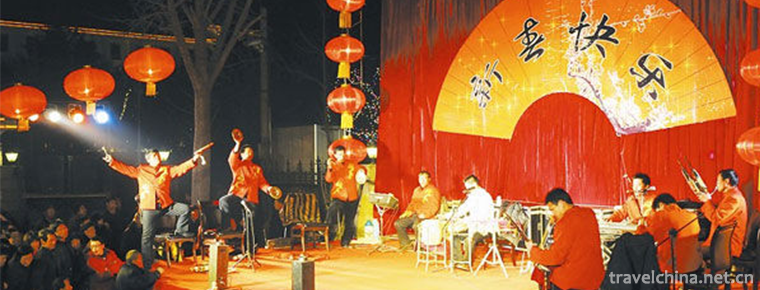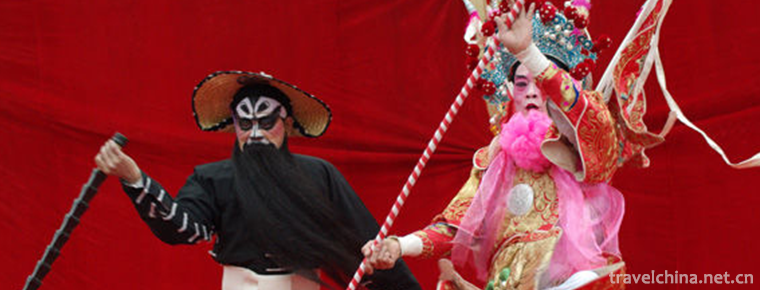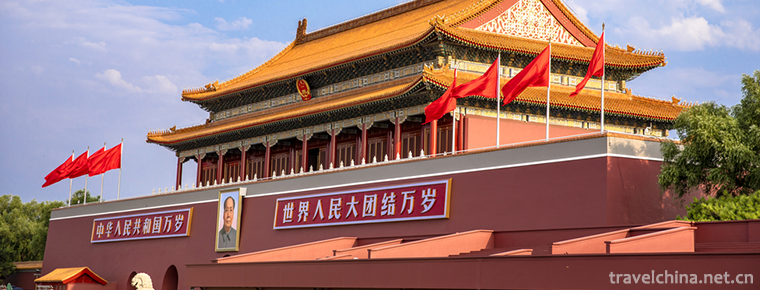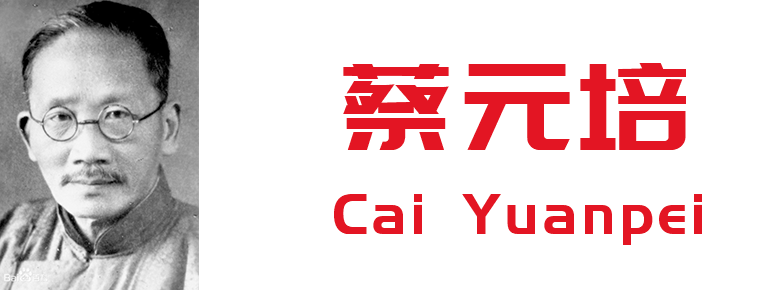Qianling Mountain Park
Qianling Mountain Park
Qianling Mountain Park is a comprehensive tourist park, built in 1957, located in the northwest corner of Guiyang City. It is named Qianling Mountain because of its "first mountain in southern Guizhou". In the quiet valley of the park, there are zoos, freaky springs and rocks everywhere. Groups of monkeys and birds inhabit the park. There are also Quaternary glacial relics on the mountain. Qianling Park is not only a famous scenic spot in China, but also a good base for teaching practice because of its complex geological structure and various plant species.
Qianling Park is a national AAAA-level tourist area, located in the northwest of Guiyang Central District, with Zaoshan Road in the south, Bapiyan Road in the east, Shibei Road in the northeast, Guandaoyan and Xiaoguan Reservoir in the north, Changpo Ling Forest Farm in the west, Qichongling, Sanqiao Village and Shengquan. It is 1.5 kilometers away from the city center and covers 426 hectares. It is one of the few large-scale comprehensive urban parks in China. It is famous for Mingshan, Xiushui, Youlin, Ancient Temple, Shengquan and Lingmao. Peaks and hills in the park are verdant, ancient trees are towering, trees are green, ancient caves are clear, deep valleys and deep pools are clear and distant. It has been a bright pearl in Guizhou Plateau since ancient times, and it has the reputation of "the first mountain in southern Guizhou".
Historical evolution
During the Anti-Japanese War, patriotic generals Zhang Xueliang and Yang Hucheng were placed under house arrest in Qilin Cave. Stone carvings on steep cliffs can be seen along the winding path leading to this Buddhist temple. The "Overview Pavilion" on the top of the mountain gives you a panoramic view of Guiyang City. At the foot of the mountain is Qianling Lake, which is sparkling with blue waves. The surface of the lake is like a mirror. From time to time, some naughty fish jump out of the water and the cruise boat swims quietly on the water.
There is a monument to revolutionary martyrs by the lake, hidden in the green pines and cypresses. Qianling Park is a comprehensive tourist park. There are zoos in the quiet valley of the park, and there are Quaternary glacial relics on the mountain. Qianling Park is not only a famous scenic spot in China, but also a good base for teaching practice because of its complex geological structure and various plant species.
In 1998, the park was selected as a famous park in China. In 2001, it was assessed as "AAAAAA National Grade Tourist Area". In 2009, it was awarded the title of "National Ecological Civilization Education Base" by the State Forestry Administration, the Ministry of Education and the Central Committee of the Communist Youth League. In 2009, it was awarded the title of "National Ecological Civilization Education Base" by the State Forestry Administration, the Ministry of Education and the Central Committee of the Communist Youth League.
Introduction
Because the climate background of Qianling Mountain is in the plateau area, the climate condition of Qianling Mountain is quite consistent, and it has different plateau subtropical climate characteristics from the typical mid-subtropical region. There are no severe cold in winter, no heat in summer, plentiful heat and long growth period. The annual average temperature is 15.3 C, the January average temperature is 4.9 C, the highest temperature is 33-34 C, the lowest temperature is 4-5 C, and the frost-free period is 270 days.
The ancient trees in the garden are towering, and the vegetation is dense. It combines the spirit of Guizhou plateau. More than 1500 kinds of trees, flowers and more than 1000 kinds of precious medicinal materials grow on the mountain. Clear spring rocks can be seen everywhere, and there are groups of rhesus monkeys and birds living here. Along the "Nine Curving Paths" mountain climbing can reach Hongfu Temple, which was built in the late Ming and early Qing Dynasties, is one of the famous Buddhist temples in Guizhou. Hongfu Temple, Qilin Cave on the foothills and cliff stone carvings on the hills are key cultural relics protection units at the provincial level.
Qianling Mountain Park integrates mountains, forests, springs, lakes, caves, temples and animals, which is absolutely unique in the world. It is known as "beauty is in nature while you are in the city". Qianling Mountain is a part of the central part of Zhongshan Plain in Guizhou. The park has continuous mountains and valleys with varied topography. The elevation ranges from 1100 meters to 1396 meters, and the topography fluctuates with little difference in relative height, about 200 meters.
Mountains are: Baixiangling, Octagonal Rock, Daluoling, Xiangwang Mountain, Qichongling, Honolulu, Zhangboshan. The elevation of Daluoling is 1396 meters, which is the first peak in the park and the northwest of Guiyang central area. Because of the complex geological structure, there are many strata in Qianlingshan area, including Maokou Formation of Lower Permian, Wujiaping Formation and Changxing Formation of Upper Permian, Daye Formation and Anshun Formation of Lower Triassic, Guiyang Formation of Middle and Sanqiao Formation, Erqiao Formation and Ziliujing Group of Lower Jurassic.
In April 1944, Li Siguang, a famous geologist in China, inspected the site of Hongfusi Temple in Qianling Mountain, which belongs to the Quaternary glacial relic "Ice Kiln". Geomorphologically, the Qianling Mountains are shallowly cut low hills and hills. Geomorphological changes are mainly influenced by geological structure and lithology, forming several types of landforms, which become the basic framework of other natural geographical components and the development of natural landscape renovation. The rocks in this area include carbonate rocks and non-carbonate rocks. Geomorphological types can be divided into karst landforms and normal eroded landforms according to their genesis.
The zonal soil of Qianling Mountain is yellow soil. Due to the influence of geological structure and lithology, different geomorphological types are formed, which are controlled by the ridges and valleys of NE-SW direction. The mountains composed of anticlinal slopes have large slopes and steep topography, and the soil erosion is serious and the soil is thin. In the valleys between mountains, such as Kirin Valley in the East and Erqiao Valley in the west, because of the low and flat terrain, the lithology is soft and the soil layer is thicker. Topographic changes not only affect the thickness of soil layer, but also restrict the differentiation of soil types.
Qianling Mountain Park Park has many mountains and ravines, complete slope, and various plant growth sites.
Because of historical reasons, the original subtropical wet evergreen broad-leaved forest community has basically disappeared. The existing vegetation is mainly secondary plants which regenerate naturally after evergreen broad-leaved forest is destroyed. A total of 476 species of plants belonging to 350 genera and 128 families are known, accounting for 8.17% of the total plants in the province (10.12% of them are ferns, 26.56% are gymnosperms and 8.06% are angiosperms). There are so many plants in the small area that we can see that they are rich in plant species. Among them, the rare plants are: Semi-maple, rock red bean trees.
The distribution of groundwater in Qianlingshan area is complicated due to the diversity of rock assemblages and complex structures. In the park, more groundwater emerges to form wells and springs, forming Daluo River, Qixingtan Valley and Zhongxi River in Zoo Valley. There are many wells with good water quality, such as Shengquan, Sandalwood Spring, Baixiangquan, Lengcui Spring and Daluo Spring. Qianling Lake is an artificial reservoir with a storage area of about 22 hectares, forming an open water surface in the garden. Shengquan is an integral part of the scenic tour of Qianling Mountain. The historical records and various notes take Qianling Mountain as the center. They describe the Shengquan as follows: there are springs in the five miles behind the mountain, and the famous Shengquan. The eight scenic spots of Qianling also include the "Shengquan Baiying". There are other springs near the Holy Spring.
The elephant Wang Ling overlooks the pavilion and gives a glimpse of the style and features of the city. The park is full of birds and monkeys. Rhesus monkeys mainly live around Qixingtan feeding farm and Hongfu Temple. Most of the birds are arboreal birds and a small number of wading birds. They are distributed in valleys, Qianling Lake and wetlands in the upper reaches of the lake. "The bamboo forest around is very luxuriant, pine and fir dripping green, cassia fragrant." "Trees come out of crevices, shade bars the sky, pedestrians in the meantime, towels and tracks are green, the breeze suddenly comes, quiet and gentle, mountain birds up and down, make a hundred voices."
Main attractions
The park consists of Sanling Bay Macaque Ornamental Park, Hongfu Temple, Kirin Cave, Zoo, Qianling Lake, Fengyuqiao and Panshan Trail. There are advanced recreational facilities and popular science centers such as sledges, tourist ropeways and oceanic halls.
Macaca ornamental garden, domesticated free-range wild Macaca about 700, visitors here can fully appreciate the natural interest of harmony between human and animals. Chiang Kai-shek received General Zhang Xueliang's old site in the area.
Kirin Cave, with a history of more than 500 years, is named for its stalactites resembling Kirin. As early as the ninth year of Jiajing in the Ming Dynasty (1530 years in the park), a white clothes temple was built in front of the cave. From May 1941 to October 1942 and from February to August 1949, the patriotic generals Zhang Xueliang and Yang Hucheng were imprisoned here. It is now a provincial cultural relics protection unit and a city-level patriotic education base.
The zoo keeps all kinds of rare birds and animals.
Qianling Lake, Daishuocuiwei, sparkling, such as pearls inlaid in the surroundings of mountains. The "Monument to the Revolutionary Martyrs of Guizhou Liberation" stands tall on the lakeside and is famous all over the world for its abundant holy springs. Visiting lakes, returning to the mountains and rivers, euphemism and elegance, water pavilions of corridors and bridges, green poplars and green willows, more scenery in central Guizhou.
Wind and Rain Bridge Scenic Area, natural scenery, small bridges flowing water, mountain trails weeping willows, streams around rocks, through trees and flowers, forming a world of water. Wind and Rain Bridge is facing the wind and water, giving a glimpse of the scenery of the two lakes.
Panshan footpath, 13 kilometers of stone steps will park like Wang Ling, Bai Xiangshan, Qianling Mountain, Honolulu, Daluoling, Guandaoyan, Ma'anshan and other mountains connected. During the tour, you can see Qifeng Xiushui, Weishi Cang Teng, Qing Dynasty and Republic of China cliff carvings, stele inscriptions, ancient pavilions, trenches and so on.
Seven Star pond
From Honolulu Spring, the spring water gushes out from Kirin Cave to the main gate of the park, forming seven pools, named after the Big Dipper Seven Stars, which are in turn Shaoguang Pool, Kaiyang Pool, Yuheng Pool, Tianquan Pool, Tianji Pool, Tianxuan Pool and Tianhutan. The Yangliujing and Baixiangquan near the pool are clear and sweet; the Yangliujing and Baixiangquan on the pool are smoky and the arch bridge is carved; the lotus blossoms in the pool and the fish play. Chisong monk once chanted poems and praised: "That is the calm water of Honolulu, and smoke and the moon to Qianxi".
In 2003, the government invested in the transformation and development of Qixingtan landscape. On the premise of protecting the original landscape, the revetment, waterscape, vegetation and forest facies of Qixingtan were transformed to increase the construction of roads, squares and rest facilities, highlighting openness, affinity and ornamentation. Formation of Qixingtan scenic area Cuizhang Qingxi, mountain springs cascade waterfalls, rocky rocks, green trees, mountain flowers, bird song deep valley, ape cry quiet jian, stone wall rock features, four seasons scenic landscape painting scrolls.
Sanling Bay Rhesus Monkey Ornamental Garden
Qianling Park Wild Macaque Ornamental Park is a part of the park's Sanlingwan Scenic Area. It was originally a Chinese and Western-style building, including conference rooms and guest houses. It was built in the 1930s. In 1985, the government invested in renovating the park. Only the original conference room was reserved, accompanied by a corridor with Chinese garden features and pavilions and pavilions in the south of the Yangtze River for visitors to enjoy and rest. In 1991, the park built the only wild macaque ornamental Park in the country.
On April 9, 1946, Chiang Kai-shek's father and son met here with General Zhang Xueliang, who was imprisoned in Xiaoxi Lake, Tongzi County, Guizhou Province, and stayed overnight. After liberation, it once served as a temporary office space for the people's government of Guiyang. Qianling Park was built in 1957, and the area was assigned to the park management. After more than ten years of unremitting efforts, scientific research has been successful. More than 400 wild macaques play with tourists (up to more than 3,000) in the waterside of the corridor, looking for food and being comfortable. The fascinating natural interest, like bringing people back to nature, has formed a rare and moving landscape in which man and nature live in harmony. Here you can enjoy the fun of human monkeys and make people linger and forget to return.
In China, some scenic spots such as Emei Mountain in Sichuan Province have macaques that can be intimately contacted. But only Qianling Mountain can be seen in the urban area. Guizhou Lingshan Monkey is also very famous, known as "Lingshan Monkey", has become one of the tourism projects to Guizhou and Guiyang. Guiyang Qianling Mountain Park covers an area of about 4.26 square kilometers. It has six main peaks, such as Baixiangshan, Honolulu and Daluoling. There is a zoo with an area of 46 mu in the park. The origins of these "mountain kings" are closely related to the zoo.
According to Guizhou Lingshan Park staff, in the 1960s and 1970s, several monkeys in the zoo cage slipped away while the keepers cleaned and cleaned. In addition, several monkeys used for experiments ran away from the epidemic prevention station in Guizhou Province and went to Qianling Mountain to "drop grass". In 1980, the number of rhesus monkeys was about 30, so they were afraid to go downhill.
Guiyang's gardening department decided to bring these monkeys down the hill to attract tourists. By successfully inducing by feeding, the monkeys gradually stopped running when they saw people. Rhesus monkeys have become a major feature of the park, which is deeply loved by tourists and adds many surprises and pleasures to tourists. Thereafter, the monkeys that improved their living conditions grew year by year through regular feeding. By 1996, the population of Qianling monkeys had grown to 200. By 2010, the number of monkeys had increased to more than 500, and the largest group of monkeys had more than 200.
Kylin Gave
Qilin Cave, formerly known as Tangshan Cave, is also called Qilin Cave because of its stalactites, which resemble Qilin Cave. The cave is spacious and can accommodate hundreds of people. Nine years before the cave in Jiajing, Ming Dynasty, a temple was built, called Baiyi Temple. Yang Jin, the eunuch who guarded Guizhou, once wrote about the cave with clouds: "Tangchuan in the depths of Baiyun, Dongkou lotus in pillow stone and Yanluo", "Thousands of clouds, thousands of peaks, thousands of pearls and all elephants hanging". This cave has been taken seriously by tourists since the Ming Dynasty.
Baiyi Temple has been destroyed repeatedly. Now it has been rebuilt into a refined house, facing the mountains and rivers. The stone walls at the entrance of the cave are covered with vines and Ge, which resemble weaving curtains; Shuanggui in front of the steps, Yangfang in the autumn, elegant courtyard and interesting. From May 1941 to October 1942 and from February to August 1949, patriotic generals Zhang Xueliang and Yang Hucheng were detained here by Chiang Kai-shek successively. Following the decision of the Party Central Committee to build socialist spiritual cultural relics, national heroes set up the exhibition rooms of General Zhang and Yang Er here in 1985, restored their bedrooms where they used to display precious historical relics and pictures, and briefly introduced the experience of the "Xi'an Incident" and the situation of the two detainees. On February 23, 1982, Qilin Cave was listed as a provincial cultural relic protection unit. In April 1997, it was listed as a patriotic education base in Guiyang City.
Zoo Scenic Spot
Located in the mountains, the Park Zoo is located on the platform of Zhangbofeng Mountain. It is a garden for breeding, studying wildlife and exploring the mysteries of nature. It was built in 1958 and covers an area of 7.55 hectares. It has a relatively flat terrain. It rises from the gate to the back of the platform. A variety of cages and feeding grounds have been built along the valley, including the Black Leaf Monkey Hall, Panda Specimens Showroom, Lion Tiger Hall, Bear Pond, Deer Garden, etc. The cage area is 3300 square meters. There are more than 50 kinds of animals on display, including the national rare protected animals such as Siberian tiger, African lion, leopard, peacock, ostrich, emu, swan, antelope and so on. There are rare animals such as South China Tiger, black leaf monkey, pheasant, red belly pheasant, white orice and so on, which are unique to Guizhou. The garden is surrounded by Cuiling Ridge. Birds are singing and flowers are fragrant. Tigers are whistling and apes are singing. It has become an important place for tourists and teenagers to enjoy and entertain, to publicize science popularization and to protect ecology.
In the rearing and breeding of wildlife. The zoo has successfully bred 51 South China tigers, supported 13 urban zoos in China, and exported them to Sudan, Korea and other places. The scientific research on breeding and management technology and reproductive habits of black langur has reached the advanced level of domestic research. More than 50 species of rare birds and animals, more than 100 of them, are on display. There are more than ten kinds of protected animals in the first class and more than forty (heads) in the second class. Among them, the black langur, the South China tiger and the African lion are rare animals.
Hongfu Temple Scenic Area
It is one of the key national open temples and provincial cultural relics protection units. It is the largest Buddhist jungle in Guizhou Province and the first temple in Guizhou Province. Temple hall, elegant structure, large scale, broad corridors, pavilions all over, quiet and ancient elegance, spring Ying song Yan dance, flowers contend for beauty, autumn Dangui fragrance, red beans shine. The main buildings are Fahua Tower, Jiulongbi, Dashan Gate, Bell and Drum Tower, Tianwang Hall, Guanyin Hall, Daxiong Palace, Jade Buddha Hall, Tibetan Sutra Hall, Speaking Hall, Living Hall, Shuanggui Tower and Abbot's Garden. There are 72 large and small buildings such as Stele Gallery, Suxiangzhai, Wuguantang Hall and 500 Luohan Hall, together with Fangsheng Pool and Tea House, covering an area of nearly 11,433 square meters. Entering the temple for ritual and Buddhist sightseeing gives one a deep and solemn feeling of the Vatican Palace.
In the eleventh year of Emperor Kangxi of the Qing Dynasty (1672), Chisong monk Yunyou came to build the temple, and Jiemao Ancient Temple was built in the mountains. Then he recruited four sides to build the temple. The name of the temple was Hongfu Temple in Qianling Mountain. The word "Hongfu" was the meaning of "Hongfo Great Wish, Save the People and Save the World; To bless all living beings, good start and good end". The creation of mountain temples began in the world. Chisong is the ancestor of this temple. Buddhism and Dharma are the orthodox religions of Linji, and one of the five Zen sects. In the fourth year of Qianlong reign of Qing Dynasty (1739), the Qing court presented a Book of the Dazang Sutra, which was granted by Yongzheng of Qing Dynasty to preach precepts. During the Republic of China, he was the seat of Guizhou Buddhist Association. In the eighteenth year of the Republic of China (1929), Master Guoyao founded Guizhou Buddhist College here. After the founding of the People's Republic of China, Master Huai Yishi presided over Faxi, devoted himself to cultivation and self-sustenance, and practiced self-cultivation and self-cultivation. During the Cultural Revolution, the monasteries were scattered and used by the courtyards. Since the reform and opening up in 1979, the people's governments of Guizhou Province and Guiyang City have made repeated decisions to restore Hongfu Temple. In 1983, Hongfu Temple was listed as one of the key national open monasteries announced by the State Council, and it was also designated as a key cultural relics protection unit at the provincial level. On July 28, 1987, it was handed over to the monks and administered by Master Huihai, president of the Buddhist Association of Guizhou Province. With the care and attention of the provincial and municipal governments and the support of disciples from all walks of life, Master Huihai, after more than ten years of criticism and painstaking management, not only renovated the hall of Hongfu Temple, but also added many new buildings, repeating the past solemn and magnificent atmosphere, became a solemn and magnificent ancestral court in Guizhou Province, with pure morality and Zen Gate in the midst of prosperity. Teachers'merits are comparable to those of the Chisong monks, and they are immortal.
Along the Nine Curving Paths, dragonflies circle around and turn around 24 times to reach the temple. The temples and temples are magnificent, the Buddha statues are solemn, the stone pagodas are lined, and the ancient trees are towering in the sky. The inscriptions on the cliff beside the path are endless, among which the word "tiger" is more than 6 meters high and the inscription is Zhao Dechang's book in Daishan. It is actually a substitute for Sun Qingyan, a famous painter and calligrapher in the Qing Dynasty. On the Wangcheng Platform (1270 meters above sea level) of Wangling, the rear of the temple, there is an "Overview Pavilion" (written by Master Liu Haisu in the spring of 1986). The elder generation of state leaders once climbed the peak to write poems. Dong Biwu's poem: "Competing for the first mountain in southern Guizhou, the old man is still stubborn. Spring clear tree ancient leaves slightly detached, the temple outside the two peaks stand like a pass. Zhu Deshi "Qianling Mountains look at Guiyang, ten years of construction for new clothes. How handsome young people are, and they are working hard to build their hometown.
Qianling Lake Scenic Area
Qianling Lake was built by damming Daluoxi River in 1954. It covers an area of 28 hectares. In 1999, the municipal government increased its investment in park construction and completed the dredging project of Qianling Lake, which enlarged the capacity of the lake and reservoir, made the dam more stable and made the water quality clearer. Dai Suo Cui Wai, sparkling. Points of boats in the lake make the boat swim smoothly. Lake scenery, elegant and pleasant, bridge water pavilion, green poplar and willow, more beautiful scenery of Guizhou Mountain.
The Monument to the Revolutionary Martyrs of the Liberation of Guizhou, built in 1958, stands on the West Bank of Qianling Lake. In 1999, the municipal government invested special funds for transformation. Changing the guardrail of the monument to Han Baiyu, Plaza to granite ground, lakeside guardrail to grass Baiyu, adjusting the greening vegetation around the monument, today's monument is more solemn and solemn. This monument to revolutionary martyrs symbolizes the noble respect of the people of Guizhou Province for the heroic martyrs who died in liberating Guizhou Province. It is an important place for the people of Guizhou to carry out revolutionary commemorative activities, carry out patriotic traditional education and remember the martyrs. It is also one of the main attractions of Qianling Park.
The Monument to the Revolutionary Martyrs of Liberation Guizhou was built in 1956. It covers an area of 2,000 square meters. The square in front of the monument is 64 meters wide and 34 meters long. It can accommodate more than 10,000 people. On the sixth and fifty-eighth steps, a stone tablet about thirty meters high stands on the top floor. On the stele, Li Ziguang wrote the golden words "the forerunners of the revolution in Guizhou will be immortal forever". The top of the stone tablet is two layers, which are tower-shaped. Each layer has four warping angles, and the bottom is carved with semi-circular stone flowers and a bright red five-star. The pedestal is square, four meters long and one meter five high. There is a wreath carved in the middle of the four sides. The two sides of the wreath are tied with red silk. It extends to both sides in a certain radian, hangs downwards while carving patterns of gears, rice and wheat ears on both sides. The stone steps are three-fold, with carved stone pillars and stone bars, one meter and two doves of peace carved in white clouds on all sides. The designs are exquisite and meaningful: the gears symbolize the working class, and the rotating gears seem to drive the whole country forward; the rice and wheat ears symbolize the peasant class, but also the happiness of the people and the prosperity of the motherland; the wreaths embody the decay of the martyrs who died fighting in blood; the pigeons symbolize the peace and tranquility of the motherland; the bright red five-star symbolizes the peace and tranquility of the motherland. The great Communist Party of China. The monument is surrounded by green pines and cypresses, and the square is surrounded by sweet-scented osmanthus, Magnolia and other lush plants.
Guandaoyan Scenic Area
Guandaoyan Scenic Area is located in the northeast corner of Qianling Park. It is connected with Xiaomeiwan Scenic Area in the South and the provincial people's government in the west. There are roads connecting with Zhongbei Road. The mountains around the scenic spot are mostly dense pine forests, partly broad-leaved forests, while the valleys are densely covered with bamboo forests, and some ginkgo forests are green scenic spots with green as the main body and ecological functions as the core. They are the manifestations of green and ecological values of Qianling Park, and are good places for citizens'leisure activities and physical fitness.
"Guizhou Tujing Xinzhi" contains: "Guishan, in the second mile north of Zhicheng, the solitary peak is steep, Wu out of the mountains. Following that, Yaguan was also a famous peak. The name of the county is based on it. According to literature reasoning, Guishan is Guandaoyan. Because bamboo was abundant in ancient Guiyang, many places were named after bamboo, and "bamboo" and "architecture" were homophonic, so Guiyang was abbreviated as "architecture".
This is the place where the "Guishan Rising Show" in the "Eight Sceneries of Guiyang" recorded in "Tongzhi of Kangxi" is located. "Guishan is beautiful". Guishan is also called Guiren Peak. The mountains are steep, high and beautiful. Poet Wu Dan has a poem: "Mountains can stand up to the cube and praise you, people will walk alone and start to pass on." Even though Mount Tai is so high, it would be useless without Confucius." Tighten up the word "noble man", and depict the characteristics of your mountain towering towering, Diyi other peaks.
Xiaomeiwan Scenic Area
Xiaomeiwan Scenic Area is under construction and will become another good place for leisure activities and physical fitness.
Holy spring
The "holy spring" in Qianling Mountain, also known as "Baiying spring" and "Leaky spoon spring", is located in the lower five miles of Sanqiao Village, Qianling Township, about 600 meters southwest of Qianling Mountain Lake, with an elevation of 1180 meters, which is about 90 meters higher than the surface of Qianling Lake (1090 meters above sea level). From the West Bank of Qianling Lake to the southwest, through the railway, along the Songlin Road, about 500 meters to reach the site of Shengquan. The holy spring seeps out from the edge of a depression between the two hills on the mountainside. It shrinks more than a hundred times a day, so it is called "Baiying spring". Geyser is a kind of periodic sprinkler or water gushing spring. In karst area, geyser is also called "multi-tidal water". The reason why it has periodic water gushing phenomenon is that underground karst water moves in complex underground pipelines and generates siphon-like circulation. When the groundwater level reaches a certain height, water gushes out from the spring through a pipe similar to a siphon, then the groundwater level falls due to the flow of water. When the groundwater level is again accumulated to the height of the siphon mouth (i.e. the spring hole), the spring water gushes out again, so that the cycle begins again and again, and the circulation is endless. In the Ming Dynasty, Shengquan has become one of the "Eight Sceneries of Guiyang", known as "Shengquan Liuyun".
When Shengquan was discovered, there was no record. It was built for people to watch in the early Ming Dynasty. The builder was Gucheng, a remote Hou in the Ming Dynasty. It has been more than 500 years since then. Holy Springs belong to geysers, which are rare and exotic springs. Generally speaking, the Dusheng Spring shrank about a hundred times a day and night. The ancients called "Baiying Spring" and "Bai Kequan" as "Qiquan" in "Qiquan". Qiquan is scarce, even if there are, it is mostly in areas with inconvenient traffic and few people. Shengquan is situated in the middle of Qianlinghu Dam Mountain. Chisong monk's Records of Qianlingshan Mountain was included in the scope of the mountain. Now belongs to the city, can be said to be unique. Shengquan is one of the earliest historical sites left behind by Guiyang. It was used for tourists in the early Ming Dynasty. It was earlier than Jiaxiu Tower, Dongshan and Qianling Mountain. It has abundant historical materials, such as Xu Xiake's Journey to Guizhou, Chen Ding's Journey to Guizhou, Wang Shiyu's Accidental Talk to the North of Chi, Tan Zui's Qian Bao and Lin Qing's Diary of the Origin of Hongxue, etc. It has been recorded in the notes of famous travels in the Ming and Qing Dynasties, such as poet Mohist, scholar Yang Shengyan of the Ming Dynasty, patriotic poet Bei Qingqiao of the Qing Dynasty (who fought against the British invading army) and Guizhou. The famous poets such as Wu Zhongbo and Zheng Zhenzhen, who wrote the poems in Xianlai, can be described as a combination of natural and cultural landscapes. They are precious tourist resources. There are also many legends about Shengquan. Historical materials also record: because of the continuous tourists, in the 55 years of Qianlong in the Qing Dynasty, the local people raised funds to build the five miles road, and engraved with the "eternal" road monument.
Tanquan: Guiyang Municipal Heritage Protection Unit, located in the east of Qilin Cave in Qianling Park. According to the Records of Yunyan District, the spring was built before the Qing Dynasty. There is a pool in front of the well. The well water is still and there is spring water flowing to the pool.
Baixiangquan: Guiyang City Cultural Relics Protection Unit, located at the foot of Baixiangling Lotus Pool in Qianling Park, was built before the Qing Dynasty. According to ancient legends, drinking Baixiang Spring can not only prevent illness, but also relieve disaster.
Moon Well: Guiyang Municipal Cultural Relics Protection Unit, located directly below the back door of Hongfu Temple in Qianling Park, the Moon Well was dug in Kangxi 30 years ago.
Practical information
Best travel time
There is no hot summer in summer, no cold in winter, no dry air, no wind and sand in all seasons, and the average annual temperature is 15.3 degrees Celsius. Among them, the hottest in late July, the average temperature is 24 degrees Celsius, the coldest in early January, the average temperature is 4.6 degrees Celsius. The pleasant climate is Guiyang's pride. It has won the reputation of "having heaven on earth, having Suzhou and Hangzhou on earth, and having a pleasant climate in Guiyang". It is an ideal summer resort.
Get accommodation
Guizhou's main accommodation is concentrated in Guiyang, where the accommodation conditions are relatively good and there are many star-rated hotels. Among them, Guizhou Hotel is the first four-star foreign-related tourism hotel in Guizhou Province, with superior facilities. It is an ideal accommodation, and also the largest comprehensive hotel with the best reception conditions in Guizhou Province.
In addition, there are star-rated hotels in Guiyang: Guiyang Jinzhu Hotel, etc. It is not difficult to come to Guiyang for tourism and find a place to live.
Special tips: Generally speaking, the tourist attractions from Guiyang can not be rushed back on the same day, and the accommodation conditions of tourist attractions are relatively poor. Most of them are hostels. Therefore, tourists are advised to live in nearby small and medium-sized towns, where the conditions may be better.
Scenic food
Guiyang's catering is characterized by "spicy and hot". There is a clear distinction between spicy and hot in Guiyang, and the raw materials used are also different. Hemp is made up of several spices. Hot pepper is mainly extracted from hot pepper. It's really a pleasure to have a mouthful of local Maotai wine while tasting the spicy and spicy flavors in Guizhou. The snacks in Guiyang are specially concentrated in the delicious street near Guiyang Normal University. This is where we have to go when we arrive in Guiyang. In addition, there are snacks in the central square of Guiyang City in the evening. It's very tasty to sit there and eat slowly.
Guiyang snacks: tofu in love, sweet potatoes in Western plum, fried noodles in Yunnan flavor, tofu garden in Leijia, Capsicum in cylinder, Yunguicai (steamed chicken in pan 37), Guizhou vegetable tongue in banana, Yunguicai (dried basil), Yunguicai (banana honey milk), Huaxi Dangwu pepper, banana dragon and Phoenix leg, Yunguicai (fried mustard mustard mustard in winter), Lianzuo, loach pepper, Yunguicai (fried in Yunnan flavor) Noodles, shade peppers, money-making salad, mutton flour.
Admission ticket
Address: 117 Zaoshan Road, Yunyan District, Guiyang City
Tickets: admission tickets: 5 yuan per person (children under 1 meter can enter the park free of charge, but must be accompanied by adults); Ocean Aquarium: 30 yuan, 20 yuan for students, 60 yuan for families (only 3 people, parents and children), more than 10 people 25 yuan per person; Kirin Cave: 5 yuan; Hongfu Temple: 2 yuan; Zoo: 5 yuan. Qianling Lake cruise: 15 yuan per hour. Children's playground: The main recreational facilities range from 5 to 30 yuan. Dryland sled (beside the monument): 30 yuan. Cable ticket (overlooking the pavilion and overlooking the scenery of Guiyang City): 15 yuan per trip, 8 yuan for children under 1.3 meters (20 yuan for round trip and 10 yuan for children).
Opening hours: 6:30-22:00
Service facilities
Children's Playground
Antique trains, Star Wars, fruit bug pulleys, animal world, spacecraft, Naughty Castle, Lotus Leaf windmill, battery car, mini-truck, space-time shuttle, horse-spinning, children's world, space travel, bumper car, flying tower, tracking chase, bumper boat, laser water warship, pirate ship, lunar flying car, flying carpet, monorail car, horse racing, frog jump, laser warship, space Scholars, shuttle time and space.
Changyou Qianling Lake
Here is a cruise ship for you to enjoy the Qianling Lake.
Qianling Lake Restaurant
Located on the main road of the park, adjacent to Qianling Lake.
Aerial ropeway
High-altitude cableway is from the park gate to Xiangwangling. It can quickly reach Hongfu Temple, overlooking the pavilion and other scenic spots. The National Scenic Park is located in the Fengyuqiao of Erba. It shows the culture and deep details of Guizhou minority nationalities, and exhibits their handicraft.
street luge
Guizhou Province's largest entertainment facilities, the introduction of German equipment. Threatening, exciting, dry land sled located in Qianling Lake, has been opened. It's playable. Guiyang is an area inhabited by minority nationalities. National festivals are rich in content and have their own characteristics. Miao's "April 8" festivals, Buyi's "March 3", "June 6" festivals and other national festivals provide excellent opportunities for minority young men and women to find their beloved. During national festivals, rallies and leisure time, the countryside should carry out traditional folk cultural and sports activities with interesting and rich characteristics, such as field performances, Lusheng dance, song racing, horse racing and bullfighting. The marriage customs, drinking rules and funerals with strong national interest in the village will also open the eyes of visitors. If you have the honor to participate in these national festivals, you will feel the strong customs of ethnic minorities.
Traffic information
In Guiyang City, you can take buses of No. 1, No. 2, No. 10, No. 12, No. 13, No. 16, No. 22, No. 23, No. 25, No. 33, No. 41, No. 46, No. 51, No. 53, No. 72, or buses of No. 61 and No. 62.







-
Town God TempleChenghuang Temple
Located in Shanghai's Huangpu District Fang Bang Road.
Views: 153 Time 2018-10-12 -
Root palace Buddhist Cultural Tourism Zone
Root palace Buddhist Cultural Tourism Zone / Gengong Buddha Country Cultural Tourist Area, National AAAAA Tourist Scenic Area, National Eco-civilization Education Base.
Views: 125 Time 2018-12-07 -
Liaoheyuan National Forest Park
Liaoheyuan National Forest Park is located in Dawopu Forest Farm, Pingquan County, Hebei Province. It is named for its birthplace of Liaohe River in China..
Views: 147 Time 2019-01-30 -
Production Techniques of Chinese Painting Pigments
Jiang Sixutang's skill in making Chinese painting pigments is one of the intangible cultural heritages. The manufactured products of Jiang Sixutang Chinese Painting .
Views: 140 Time 2019-05-02 -
Leather Paper Making Skills
Leather paper making is an ancient Chinese traditional handicraft. Paper making is one of the four great inventions in ancient China. Bamboo paper and leather paper made from bamboo and tussah bark ar.
Views: 89 Time 2019-06-09 -
Performing and Making Skills of Qiang Flute
Qiang flute is an ancient single-reed gas singing instrument in China. It has a history of more than 2000 years. It is popular in the Qiang people's residence of Aba Tibetan Autonomous.
Views: 159 Time 2019-06-10 -
Shangdang Bayin Club
Shangdang Bayin Club is a kind of traditional folk wind and percussion music, which is widely spread in Changzhi and Jincheng in southeastern Shanxi Province..
Views: 94 Time 2019-06-13 -
Guangxi drama
One of the local operas of the Zhuang nationality in Guangxi. Yongju Opera belongs to the Pihuang Vocal Tune System, which originated in Hunan. It was formerly called Guangju Opera, Old Opera, Local O.
Views: 166 Time 2019-07-14 -
Chinese history
Chinese history From China Chinese civilization To the present history. China has a long history. Since the Huangdi tribe Ji Xuanyuan (also known as the Gong sun Xuanyuan) period has been counted for .
Views: 197 Time 2019-08-28 -
Cai Yuanpei
Cai Yuanpei (January 11, 1868 - March 5, 1940), word crane Qing, also the word Zhong Shen Cai Zhen, Zhou Ziyu, Han nationality, Shanyin County, Shaoxing Prefecture, Zhejiang (now Zhejiang). Shaoxing (.
Views: 180 Time 2019-09-06 -
Environmental protection in Mianyang
In 2018, the water quality of Fujiang, Kaijiang, Zijiang, Anchang River, Furong River, Tongkou River and Luban reservoir in Mianyang City accounted for 100% of the total water quality. Among them, Fujiang River, Tongkou River, Zijiang River and Anchang.
Views: 343 Time 2020-12-14 -
Leshan transportation
Leshan City has convenient transportation. In the 12th Five Year Plan, Leshan City proposed to implement the "100 billion yuan transportation project", including "two airlines (comprehensive development of Minjiang aviation and power and Leshan Airport).
Views: 349 Time 2020-12-17
